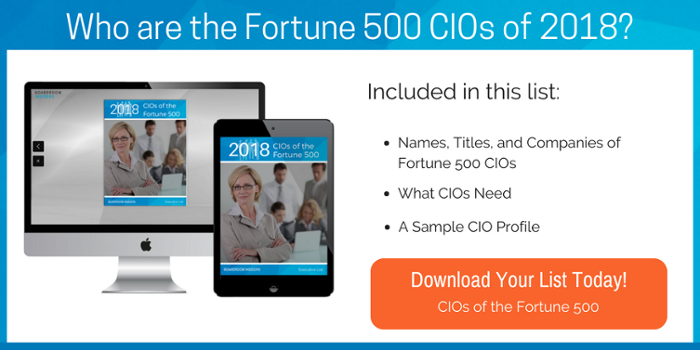.png?width=700&height=400&name=C-Suite%20Selling%20(2).png)
In a recent post we outlined how Salesforce is closing bigger deals faster by engaging CXO decision makers—all the way up to the CEO.
Many companies are trying to emulate this C-Level engagement strategy, but few are successful.
Why is this the case?
We have consulted with hundreds of companies on C-Level engagement and have observed that there are five critical success factors that come into play when it comes to C-Suite selling.
1. The Support and Engagement of Your Own Executive Team
C-Suite selling can be difficult because it requires your sales and marketing organizations to change the way they do things. Change is hard and people don’t like it, which means they are probably not going to do it if they don’t have to. This is why commitment, support and engagement from the very top of the organization are critical. Company leaders must consistently communicate the importance of C-Level engagement and hold sales and marketing accountable for executing—not just providing lip service—to their vision. Secondly, your executive team needs to support the effort by walking their talk and making themselves readily available to meet with customer peers. Salesforce has been successful because its top executives have made customer meetings a top priority. As Salesforce COO Keith Block said in a recent earnings call, “In the last three weeks, I've had more conversations with CEOs around transformation than in my entire career over 30 years."
2. Sales Training
To support a C-Suite selling effort, salespeople have to make the shift from talking about products to talking about customer business initiatives and challenges. They have to change their mindset from quick, short-term product sales to playing the long game with strategic customers. This means positioning your company as a strategic business partner (which takes time) and leveraging trusted relationships to close more substantial, long-term deals. In short, you need your sales people to acquire business acumen and learn to speak the language of the C-Level customer. This helps them get them in the door—a daunting task in-and-of-itself—and equips them to have real business conversations about things that matter to C-Suite—even becoming their professional sounding board and a source of new ideas. This takes training and support.
3. Sales and Marketing Alignment
Marketing absolutely needs to be on board to support sales in their C-Level selling efforts. C-Level selling typically requires new messaging, collateral and programs—such as events—appropriate for a C-Suite audience. There also needs to be a heightened synergy between marketing and sales teams. That includes regular meetings to discuss what’s working and what isn’t, where customers are coming from and what sources are delivering the best leads, and what the sales team needs from marketing to be successful. In many companies sales and marketing don’t cooperate as well as they should, so this is another case where the executive leadership (e.g. Chief Sales Officer and Chief Marketing Officer) needs to be in lock step, mandating collaboration between the two groups, and holding them accountable.
4. Research and Insight
C-Suite selling requires two basic kinds of insight: who to sell to and what they want to talk about. Don’t take it for granted that your sales organization knows who the decision makers are at their key accounts. We’ve learned over the years that most companies for example, don’t even have a clean list of the CIOs for their most important target accounts. This is further complicated by the emergence of new titles such as Chief Digital Officer or Chief Innovation Officer, meaning there’s a whole new crop of C-Level executives to whom you should be selling. So target identification and building lists of the right C-Level executives to target is job number one. Secondly, you’ll need to know what these executives care about—their current business initiative, key challenges, etc. That requires strategic and frequent research because these can change on a dime with a new merger or acquisition, a change of leadership, or new development in their business environment. Has the company announced a sweeping cost-cutting initiative? Are they consolidating vendors? Do they have a blank check for cybersecurity? Each are examples of real initiatives at real companies we cover. How helpful would it be to know these things going into a meeting? And how dangerous would it be to go in not knowing?
5. Measurement and Accountability
You have internal C-Level support; you have training; your sales and marketing teams are cooperating; and you have given your teams the tools for research and insight. Now you need to develop a methodology to measure how well your C-Level engagement strategy is succeeding and hold your teams accountable. That, of course, includes a compensation plan. But it has to reflect the inevitably longer sales cycle required for developing C-Suite relationships over months or even years to achieve much bigger deals. Because salespeople may be more inclined to stay in their comfort zones selling products to the same familiar customers and getting immediate results, you have to be creative in how you hold them accountable and incentivize them to take a longer term approach. One of our customers tracked—over the course of seven years—the difference in revenue from companies that were targeted for a C-Suite engagement program versus similar profile companies that were not. The result was—on average—a 30% lift in revenue from the accounts that were prioritized for C-Level engagement. This helped the team justify sustaining its C-Suite engagement program during the last big recession when other programs were getting cut.
C-Suite selling can be complex and difficult to scale, but with the right tools, strategy and executive support—as Salesforce has proven--you can lay the groundwork for bigger, better, and more deals—and create closer, more strategic relationships with your most important customers.
Boardroom Insiders is the best insight partner for companies embarking on a CXO engagement strategy. Companies like DCX Technology, VMware, Salesforce, DellEMC, and Citrix use our insight to support their CXO selling efforts.
Want to learn more? Contact us today or read some of our most popular articles:








Share Your Thoughts